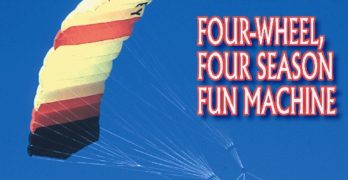Think about the Cessna 172, workhorse of general aviation and the most popular aircraft ever built. Cessna is once again building them though the plane has seen little change other than new interior finishings and avionics.
Published in Light Sport and Ultralight Flying
Empty weight
430 pounds
Gross weight
1,000 pounds
Wingspan
31 feet 2 inches
Wing area
170 square feet
Wing loading
6.1 pounds per square foot
Length
18 feet
Height
8 feet
Kit type
Assembly-type bolt-together)
Build time
50-75 hours
Standard engine
Rotax 582 2-cycle
Power
65 hp at 6,500 rpm
Power loading
15.4 lbs/hp
Cruise speed
(75% power) 64 mph
Never exceed speed
80 mph
Rate of climb at gross
850 feet per minute
Takeoff distance at gross
325 feet
Landing distance at gross
125 feet
Standard Features
Rotax 582 engine, ASI, full dual controls with dual rudder pedals and steerable nosewheel, dual throttles, mechanical brakes, in-flight adjustable trim, 4-point seat belts, double-surface presewn wings, 2-blade wood prop, extensive manuals.











